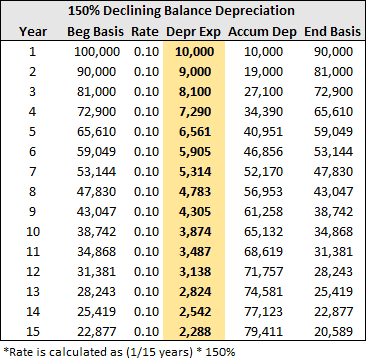Understanding Low-Income Housing Tax Credit (LIHTC) Investments
In this article, we explore Low-Income Housing Tax Credit (LIHTC) investments, a key component in the affordable housing sector. Established to encourage private investment, the LIHTC program offers tax credits to developers for creating and rehabilitating affordable rental housing. To help you better understand this investment opportunity, we’ll we examine some of the historical context, structure, development process, financial benefits, and challenges of LIHTC investments, providing a comprehensive guide for commercial real estate professionals.
Note: This article is based on insights from an episode of the A.CRE Audio Series, which you can listen to or watch by clicking here.
Understanding LIHTC Investments
The Low-Income Housing Tax Credit is a federal program designed to encourage private investment in the development and rehabilitation of affordable rental housing. Established in 1986, LIHTC provides tax credits to developers who create affordable housing for low-income individuals and families. These tax credits are a dollar-for-dollar reduction in federal tax liability, making them highly valuable to developers and investors alike. LIHTC also helps address the affordable housing shortage, making it a cornerstone of housing policy in the United States.
Historical Context
For nearly 200 years, the government largely avoided involvement in housing, leaving it to the private sector. However, this changed dramatically during the New Deal era in the 1930s and World War II, when the government began developing public housing to address both safety and affordability concerns. Initially, public housing aimed to replace dangerous, substandard living conditions with safe, decent homes. Over time, however, the focus shifted more towards affordability, especially as public housing faced significant challenges and criticism. This evolution laid the groundwork for modern programs like LIHTC, which leverage private investment to achieve public goals.
The Structure of LIHTC Investments
LIHTC operates by providing tax credits to developers, who then sell these credits to investors to raise equity for their projects. There are two types of LIHTC: the 9% credit, which is highly competitive and covers up to 70% of a project’s eligible costs, and the 4% credit, which is less competitive but also covers a smaller portion of costs. Eligible costs include most development expenses, excluding land acquisition and certain financing costs. The amount of tax credits allocated is based on the project’s eligible costs multiplied by the applicable credit rate over a ten-year period.
Financial Benefits
For developers, LIHTC reduces the amount of debt required to finance a project, allowing them to offer lower rents while maintaining financial viability. For investors, purchasing LIHTC offers a direct reduction in federal tax liability and can be a stable, long-term investment. This symbiotic relationship between developers and investors facilitates the creation of affordable housing, benefiting both parties and the broader community.
The Development Process
Finding a Suitable Site
The first step in a successful LIHTC investment is finding a suitable site, guided by the Qualified Allocation Plan (QAP) of the state housing agency. The QAP outlines the criteria for awarding tax credits, including location factors, such as proximity to public transportation, schools, and other amenities. Developers must carefully select sites that align with these criteria to maximize their chances of securing tax credits. For example, in Salt Lake City, points are awarded for sites near redevelopment zones and transit lines, among other factors.
Securing Funding
The next step is to secure funding. Securing funding for a LIHTC project involves multiple steps and various funding sources. Initially, developers typically secure a construction loan covering 75-80% of the project cost. Additional funding comes from the sale of tax credits to syndicators or financial institutions, which provide equity for the credits. This process often involves complex negotiations and the coordination of multiple funding sources, including federal, state, and local programs. Combining these sources effectively is crucial for the project’s financial stability.
Project Implementation
Following these two steps, you begin working on implementing a LIHTC investment by following a structured process from site acquisition to stabilization. After securing the site and funding, the construction phase begins, often resembling any other real estate development project. However, the unique aspect of LIHTC projects is the phased receipt of tax credit equity, which is disbursed at key milestones such as construction completion, occupancy stabilization, and final project audit. This phased approach helps manage cash flow and ensures that the project meets all compliance requirements.
Challenges and Opportunities
LIHTC investments may come with some significant challenges. The competitive nature of LIHTC allocations means that not all projects receive funding, and navigating the complex regulatory landscape can be difficult for inexperienced professionals. Additionally, managing multiple funding sources and meeting stringent compliance requirements adds layers of complexity. Developers must be adept at project management and financial structuring to successfully navigate these challenges.
The long-term benefits of LIHTC projects, however, are substantial and often make these challenges worth the effort. Successful LIHTC projects can generate positive returns for developers through development fees and eventual property ownership. Beyond the immediate financial incentives, LIHTC investments often contribute to the revitalization of communities and provide stable, affordable housing for low-income residents. This social impact of providing quality housing to those in need cannot be overstated, making LIHTC investments rewarding both financially and ethically.
Now, let’s put it into context with a mini case study.
Putting ‘Low-Income Housing Tax Credit (LIHTC)’ in Context
Urban Renewal Partners is a real estate investment firm specializing in the redevelopment of underutilized urban properties. The firm has identified a promising project in Chicago, Illinois: Lincoln Gardens Apartments, a 100-unit affordable multifamily housing complex that has fallen into disrepair.
Project Overview
Lincoln Gardens Apartments is a 40-year-old property located in a low-income neighborhood of Chicago. The property currently has a 70% occupancy rate, with many units needing substantial renovation. Urban Renewal Partners aims to revitalize Lincoln Gardens, bringing it up to modern standards while maintaining its affordability for low-income residents.
Utilization of LIHTC
Urban Renewal Partners decides to utilize the Low-Income Housing Tax Credit (LIHTC) to finance the redevelopment. Given the significant renovation needed, they opt to apply for the 9% credit, which can cover up to 70% of eligible project costs.
Financials and Planning
Eligible Costs: The total development cost for the project is estimated at $15 million, excluding land acquisition and certain financing costs. After an in-depth review, $12 million of this amount qualifies as eligible costs under LIHTC guidelines.
Tax Credit Calculation:
Annual Tax Credits = Eligible Costs × Credit Rate
Annual Tax Credits = $12,000,000 × 9% = $1,080,000
Since the tax credits are allocated over a ten-year period:
Total Tax Credits = $1,080,000 × 10 = $10,800,000
Urban Renewal Partners plans to sell these tax credits to investors. The current market price for LIHTC is approximately $0.95 per tax credit dollar.
Equity Raised:
Equity Raised = $10,800,000 × 0.95 = $10,260,000
By selling the tax credits, Urban Renewal Partners can raise $10.26 million in equity for the project. This significantly reduces the amount of debt they need to secure, making the project financially viable.
Redevelopment and Impact
With the equity raised through LIHTC, Urban Renewal Partners undertakes the redevelopment of Lincoln Gardens Apartments. The renovations include upgrading the electrical and plumbing systems, installing energy-efficient windows and appliances, and enhancing common areas to improve the overall living conditions.
Upon completion, the revitalized Lincoln Gardens Apartments will offer 100 modern, safe, and affordable housing units to low-income families in Chicago. The occupancy rate is projected to rise to 95%, ensuring a steady rental income stream.
Conclusion
This hypothetical scenario illustrates how the Low-Income Housing Tax Credit (LIHTC) can be instrumental in facilitating the redevelopment of affordable housing. By leveraging LIHTC, Urban Renewal Partners can not only revitalize Lincoln Gardens Apartments but also contribute to addressing the affordable housing shortage in Chicago, benefiting both the community and the investors.
Final Notes
In summary, LIHTC can be a powerful tool to enable firms to invest in affordable housing. Because of its complexities beyond a regular investment, however, understanding the history, structure, and development process of LIHTC is crucial for new CRE professionals looking to enter this field.
For those interested in diving deeper into LIHTC, we recommend researching official organizations like the National Council of State Housing Agencies (NCSHA) and the Affordable Housing Investors Council (AHIC) that cover LIHTC and affordable housing developments. Additionally, some industry publications and training programs can provide further education on LIHTC.
Finally, A.CRE also offers a range of other free resources to teach you more about all aspects of the commercial real estate field:
- LIHTC (Low Income Housing Tax Credits) Overview And Calculator
- Understanding Taxes Series: Part 1 – Depreciation
- Understanding Taxes Series: Part 2 – Exceptions To The Pal Rules
- Forecasting After-Tax Cash Flow In Real Estate Analysis
- Other Real Estate Deep Dives
We hope that this article can be a stepping stone for you to navigate the complexities of LIHTC investments and potentially find investment opportunities in affordable housing.
Frequently Asked Questions about Low-Income Housing Tax Credit (LIHTC) Investments
What is the purpose of the Low-Income Housing Tax Credit (LIHTC) program?
The LIHTC program was established to encourage private investment in affordable rental housing. It provides dollar-for-dollar tax credits to developers who create or rehabilitate housing for low-income families, helping address the U.S. affordable housing shortage.
How do developers and investors benefit from LIHTC?
Developers use LIHTC to reduce the debt needed to finance a project, enabling them to offer lower rents while keeping the project viable. Investors purchase the credits for a direct reduction in federal tax liability, making LIHTC a stable, long-term investment.
What are the two types of LIHTC, and how do they differ?
There is a 9% credit, which is highly competitive and covers up to 70% of eligible costs, and a 4% credit, which is less competitive and covers a smaller portion. Both types are allocated over 10 years and exclude land acquisition and certain financing costs.
What is the development process for a LIHTC project?
The process involves three main steps:
Finding a suitable site per the state’s Qualified Allocation Plan (QAP)
Securing funding, including a construction loan and selling tax credits for equity
Project implementation, from construction through stabilization and compliance.
How are LIHTC allocations determined?
Allocations are based on a project’s eligible costs multiplied by the credit rate. For example, a $12M eligible cost with a 9% rate would yield $1.08M in annual tax credits, or $10.8M total over 10 years.
How does the sale of tax credits raise equity?
Developers sell tax credits to investors, usually at a discount (e.g., $0.95 per $1 credit). For instance, $10.8M in credits could raise $10.26M in equity, significantly reducing the need for debt financing.
What makes LIHTC projects challenging to execute?
Challenges include competitive allocations, complex regulatory compliance, and coordinating multiple funding sources. Developers must be skilled in project management and financial structuring to navigate these successfully.
What are the long-term benefits of LIHTC investments?
Benefits include positive returns through fees and potential ownership, improved community housing, and ethical impact by supporting low-income residents. These projects often also help revitalize neighborhoods.
How was LIHTC applied in the Lincoln Gardens Apartments case study?
Urban Renewal Partners used the 9% LIHTC to fund $12M in eligible renovation costs. By selling $10.8M in tax credits for $10.26M, they raised significant equity, reduced debt needs, and revitalized a 100-unit affordable property in Chicago.








